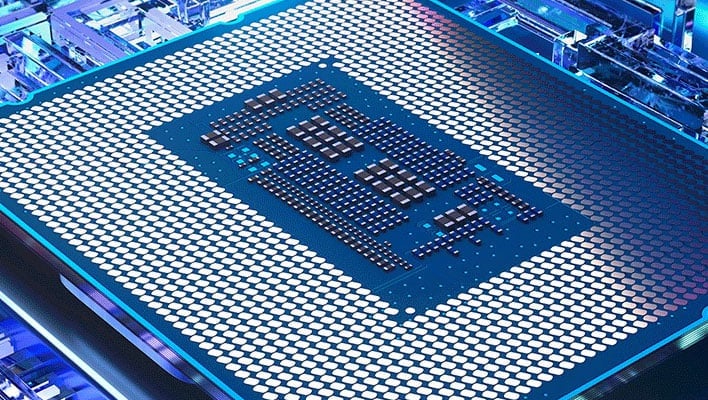Intel LGA1851 Socket Leak Reveals Key Arrow Lake S CPU Details

Igor’s Lab has leaked key details about Intel’s next-generation CPU socket, LGA 1851 that will launch with Arrow Lake S in 2024-2025. The new socket will reportedly feature enhanced M.2 storage connectivity with more CPU lanes and higher bandwidth compared to previous generations. The new socket specifications also confirm that current LGA 1700 compatible CPU coolers will not be interchangeable with the new LGA 1851 socket, forcing CPU cooler manufacturers to develop new mounting mechanisms just for the new socket.
The new changes include doubling the amount of CPU PCIe lanes that are dedicated to high-speed NVMe storage solutions. The current generation Alder Lake and Raptor Lake platform has access to just four Gen 4 lanes for storage, but Arrow Lake with the new LGA 1851 socket will have access to eight total CPU lanes dedicated to storage. Four of those lanes will run at Gen 5 speeds while the others will run at Gen 4.
This will be a massive upgrade for Intel users and will allow Arrow Lake systems to run a single Gen 5 and a single Gen 4 NVMe SSD without biting into other CPU lanes that are typically dedicated toward a graphics card. It will also free up more PCIe connectivity from the chipset, to run more USB ports, PCIe slots, or additional M.2 storage slots. Though, Intel will still be slightly behind AMD’s competing AM5 platform which has access to 8 PCIe Gen 5 CPU lanes dedicated to NVMe storage.
The biggest changes made to the mounting mechanism include drastic increases in mounting pressure that need to be applied by the CPU cooler in order to function properly. Specifically, the “Dynamic Compressive Maximum” pressure has increased from 489.5 N to 923 N, almost double the pressure compared to LGA 1700.
For more details be sure to check out Igor’s full article, where he shared leaked images of the new socket specifications and pin-out changes as well.


